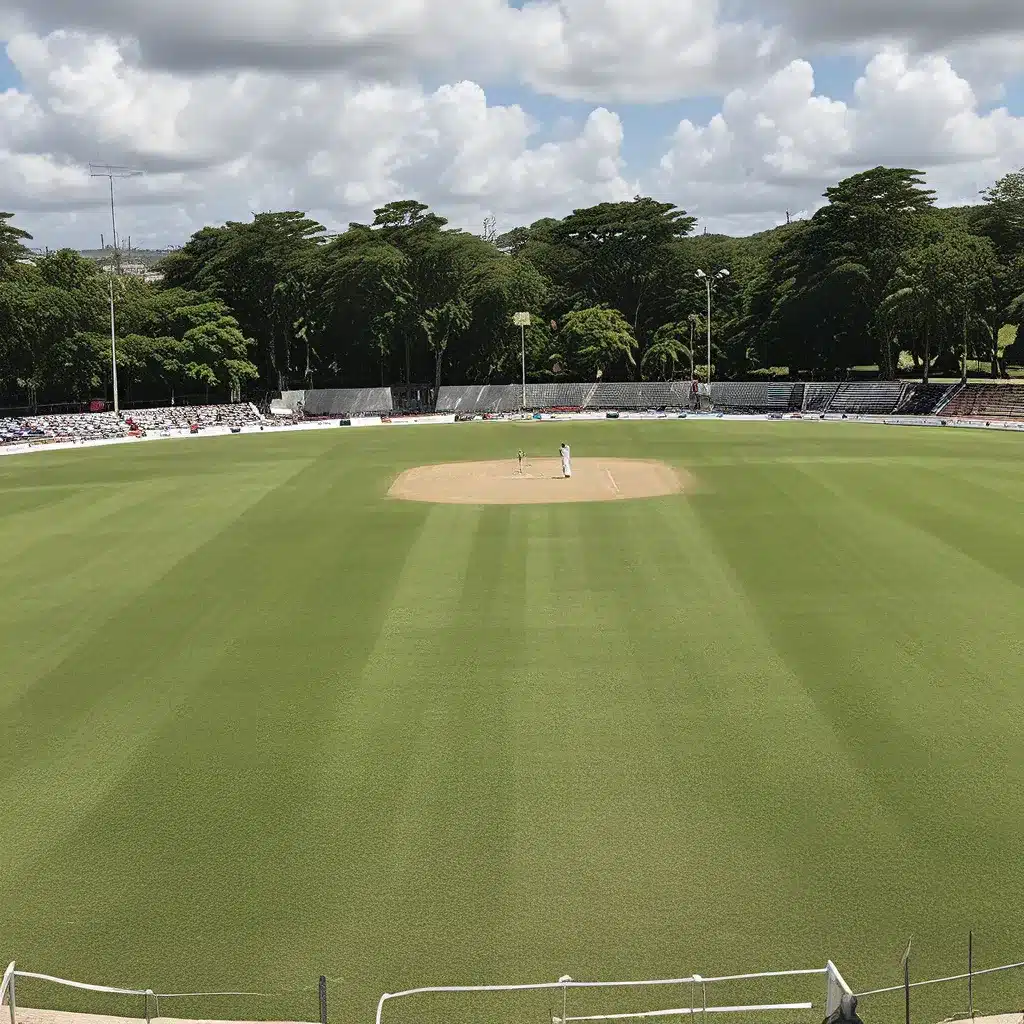
A Hallowed Ground for Cricket’s Legends
The Queen’s Park Oval in Trinidad and Tobago stands as a revered sanctuary for the sport of cricket, a testament to the region’s unwavering passion for the game. This iconic stadium has witnessed the triumphs and tribulations of countless legends, each stride, each swing of the bat etching their names into the annals of cricketing history.
The Oval’s origins can be traced back to the mid-19th century, when it first emerged as a hub for the sport in the Caribbean. Over the decades, it has evolved into a beloved institution, a place where the West Indian cricket team has forged its identity and where the region’s fervent fans have found their voice. Whether it’s the thunderous applause that greets a boundary or the collective gasp that accompanies a fallen wicket, the Oval’s atmosphere is infused with an energy that is uniquely Caribbean.
Architectural Grandeur and Storied History
The Queen’s Park Oval is more than just a cricket ground; it is a testament to the region’s architectural prowess and its unwavering commitment to preserving its rich heritage. Adorned with grand Victorian-era grandstands and pavilions, the stadium’s design exudes a timeless elegance that seamlessly blends with the lush tropical surroundings.
As observed in the literature, the Oval’s geographic location within the Caribbean region, a veritable “wee speck upon the globe,” is a testament to the remarkable resilience and determination of the people who have nurtured the sport in this part of the world. Despite the modest size of the region, it has produced some of the most extraordinary cricketers and teams, a testament to the enduring spirit of the West Indian cricketing legacy.
Captivating Moments and Legendary Performances
The Queen’s Park Oval has played host to countless unforgettable moments in the annals of cricket. From the electrifying celebrations that erupted when Gerry Gomez reached his 150-run milestone, to the sustained roars that accompany the arrival of a new West Indian batting prodigy, the Oval is a stage that amplifies the passion and fervor of the region’s devoted cricket fans.
The stadium’s rich history is further embellished by the countless legendary performances that have graced its hallowed turf. From the fiery pace of the iconic West Indian fast bowlers to the languid elegance of the region’s batting maestros, the Oval has borne witness to some of the most captivating displays of cricketing excellence. As the anthology “The Bowling Was Superfine” so eloquently attests, the Oval’s legacy extends beyond the boundaries of the cricket field, finding resonance in the rich tapestry of West Indian literature and culture.
The Oval’s Impact on Caribbean Cricket and Culture
The Queen’s Park Oval is not just a cricket stadium; it is a sacred space that has transcended the confines of the sport, becoming a symbol of the Caribbean’s cultural identity. The region’s vibrant music and celebrated literature have long been intertwined with the ethos of the Oval, creating a harmonious fusion of art and athleticism.
As observed in the literature, the West Indian cricket team’s triumphs on the global stage, most recently in the Women’s and Men’s World T20 tournaments, have only served to bolster the Oval’s status as a hub of cricketing excellence and regional pride. The stadium’s significance extends far beyond the boundaries of the playing field, as it stands as a testament to the resilience, creativity, and enduring spirit that define the Caribbean’s rich cultural tapestry.
Embracing the Future: The Oval’s Evolving Role
As the Queen’s Park Oval continues to captivate cricket enthusiasts from around the world, it also faces the challenges of adapting to the evolving landscape of the sport. Experts suggest that the stadium may need to explore innovative ways to enhance the fan experience, modernize its facilities, and maintain its position as a premier destination for international cricket events.
While the Oval’s rich history and cultural significance will undoubtedly remain at the core of its identity, the stadium’s custodians must also be willing to embrace new ideas and technologies that can elevate the fan experience and ensure the Oval’s continued relevance in the ever-changing world of cricket. By striking a delicate balance between preserving its cherished traditions and adapting to the evolving needs of the sport, the Queen’s Park Oval can continue to captivate and inspire generations of cricket enthusiasts, both in the Caribbean and beyond.
Conclusion: A Timeless Treasure
The Queen’s Park Oval stands as a testament to the enduring spirit of West Indian cricket, a sanctuary where the region’s passion for the sport has been forged and celebrated for generations. From its grand architectural design to the legendary performances that have graced its hallowed turf, the Oval has become a revered symbol of the Caribbean’s cultural identity, transcending the boundaries of the sport and weaving itself into the fabric of the region’s rich artistic tapestry.
As the Oval continues to evolve and adapt to the changing landscape of cricket, its significance as a cultural icon and a source of regional pride remains undiminished. Whether it’s the thunderous roar of the crowd or the melodic rhythm of the steel drums, the Oval’s enduring allure is a testament to the resilience and creativity that have long defined the West Indian cricketing experience. For those who have had the privilege of witnessing the Oval’s magic, it is a memory that will forever be etched in their hearts, a timeless treasure that continues to captivate and inspire cricket enthusiasts the world over.

